Fig leaf tea is a subtle, caffeine-free brew with many benefits, and a great recipe to get the most out of your fig tree! Enjoy it hot, cold, unsweetened, or with a bit of homemade fig syrup!
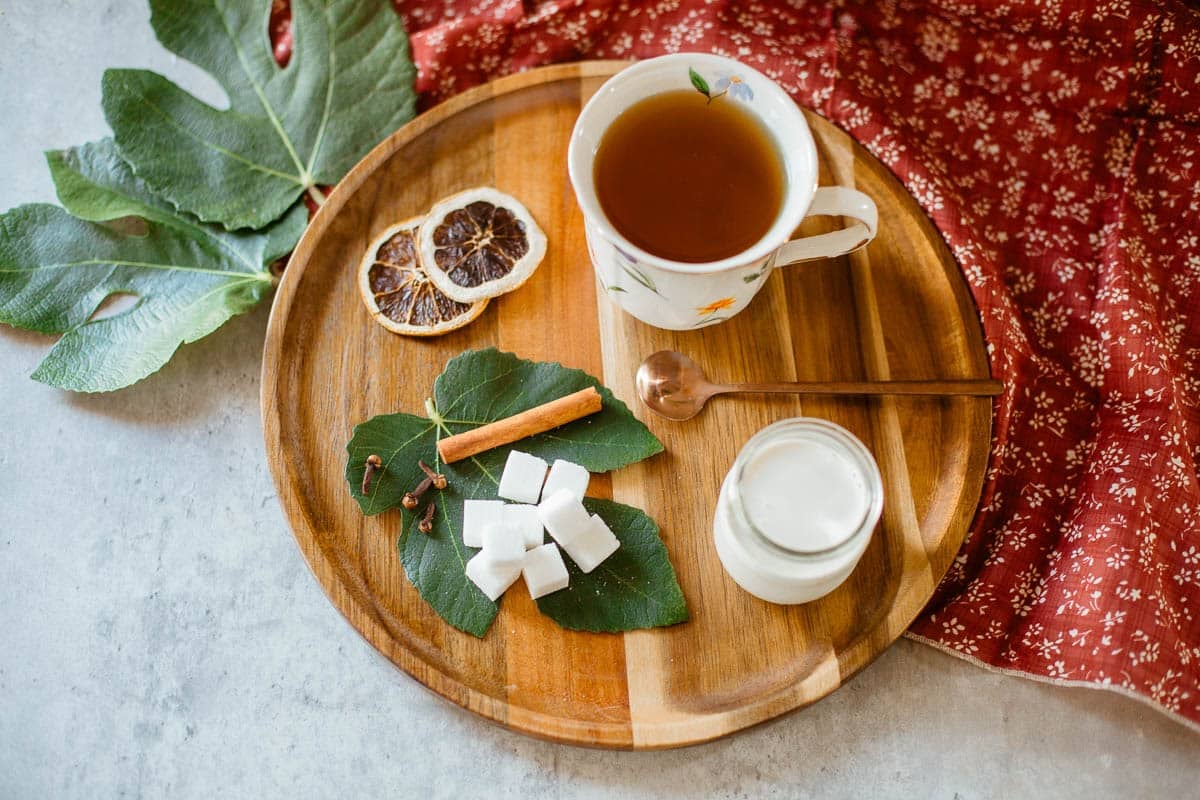
Fig leaf tea has been enjoyed for its flavor and health benefits since ancient times. The gentle flavor is reminiscent of green tea with hints of coconut and vanilla, which I like to complement with citrus and warming spices. Flavor it with sugar cubes for tea or honey syrup and serve it with a slice of moist fig cake!
Jump to:
😍 Why You'll Love This Recipe
- This herbal tea is great for winding down before bedtime, soothing a sore throat, and easing digestion!
- It also has many additional benefits with long-term use!
- Using fig leaves to make tea is a great way to get the most use out of your fig trees, even during the months when figs are out of season.
- You can make this tea with fresh or dried leaves.
🔖 Ingredients & Substitutions
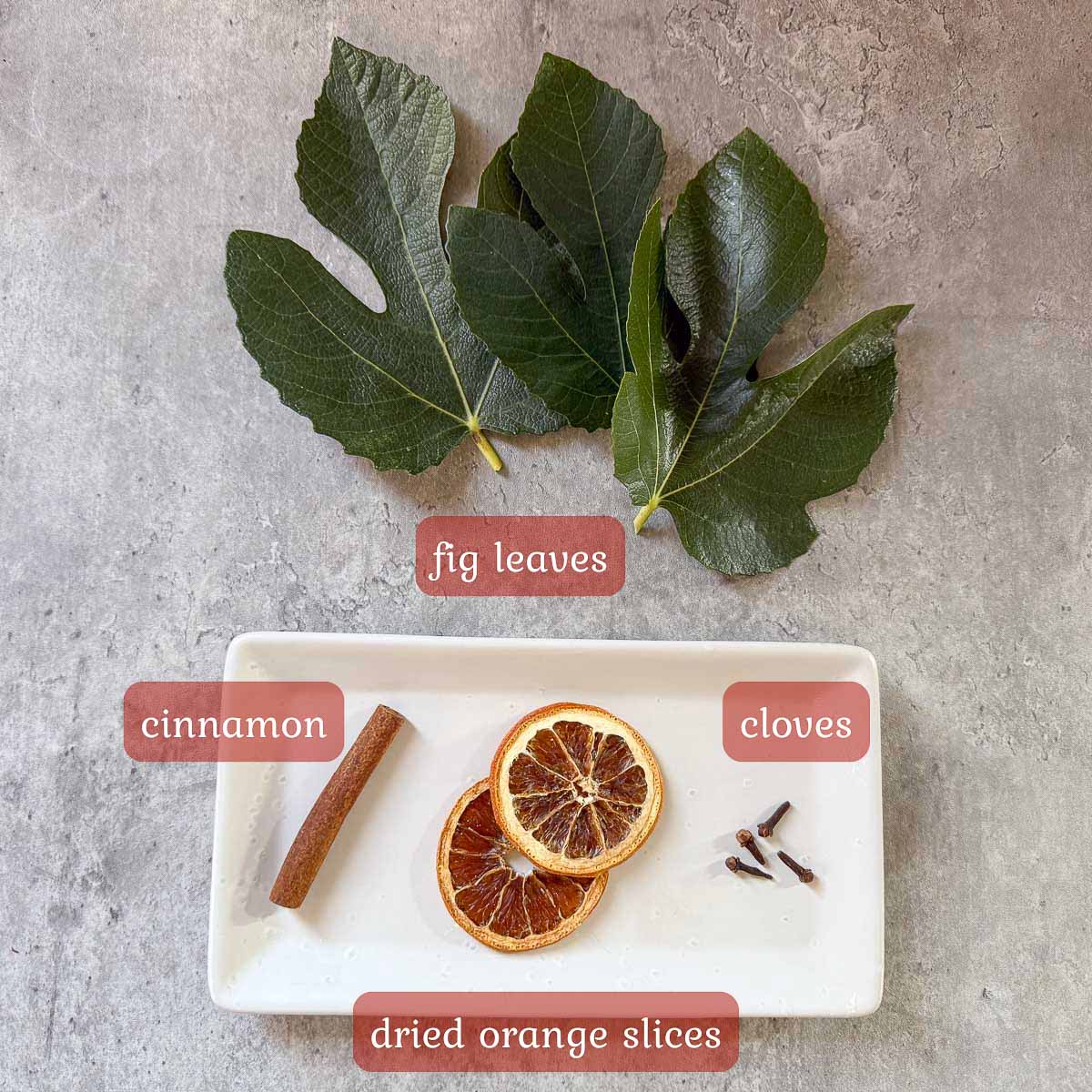
- Fig leaves: Fresh or dried both work.
- Orange: You can use dehydrated orange slices or fresh orange juice and zest. Dried lemon slices would be another good option.
- Aromatics: I use a cinnamon stick and cloves, but you can choose your favorite aromatics, including green cardamom, ginger, nutmeg, etc.
- Optional ingredients: Sugar, cream, almond, coconut, vanilla bean.
🍃 How to Make Fig Leaf Tea
Step 1: Rinse then soak fig leaves in cold water for 10 minutes to remove debris, then cut them into squares.
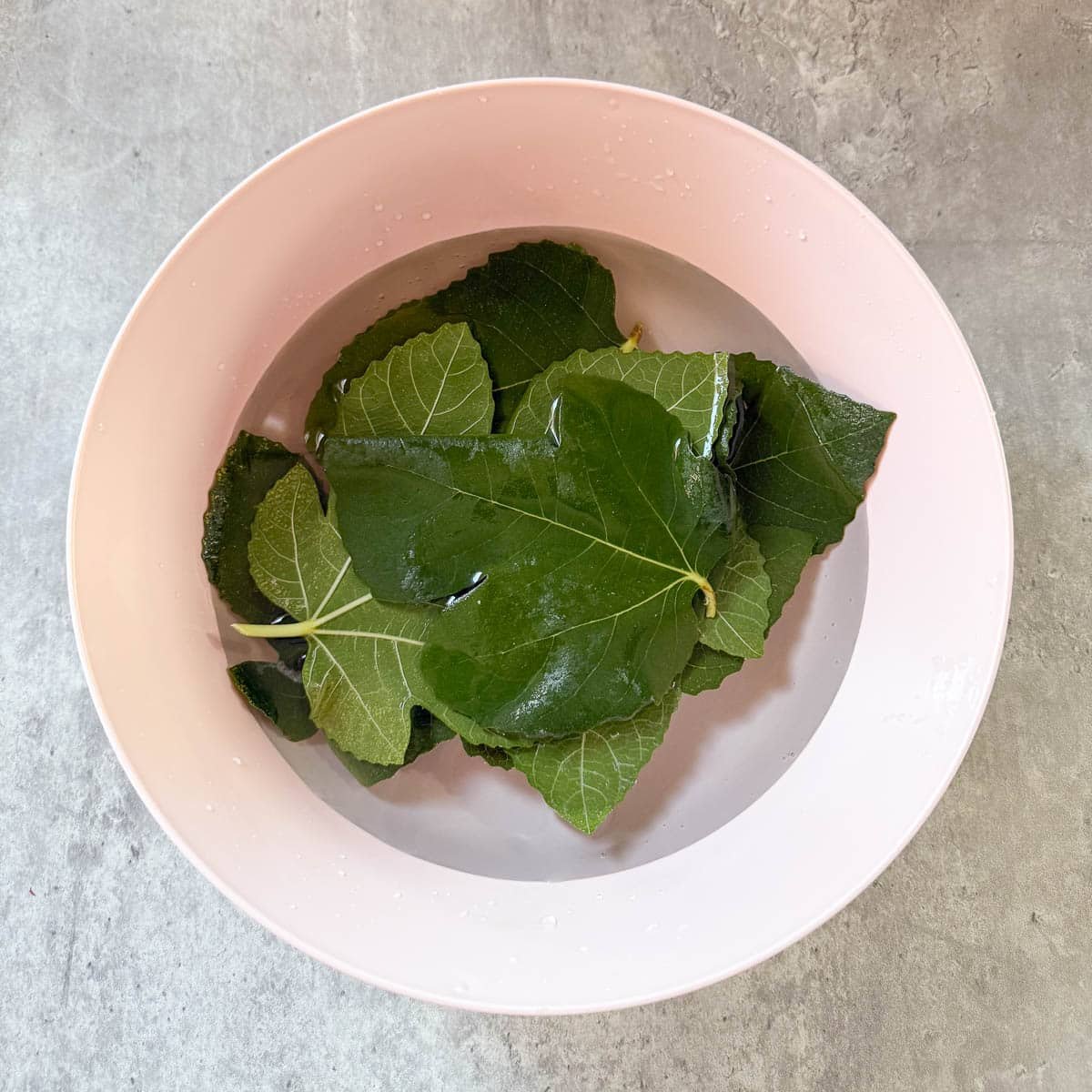
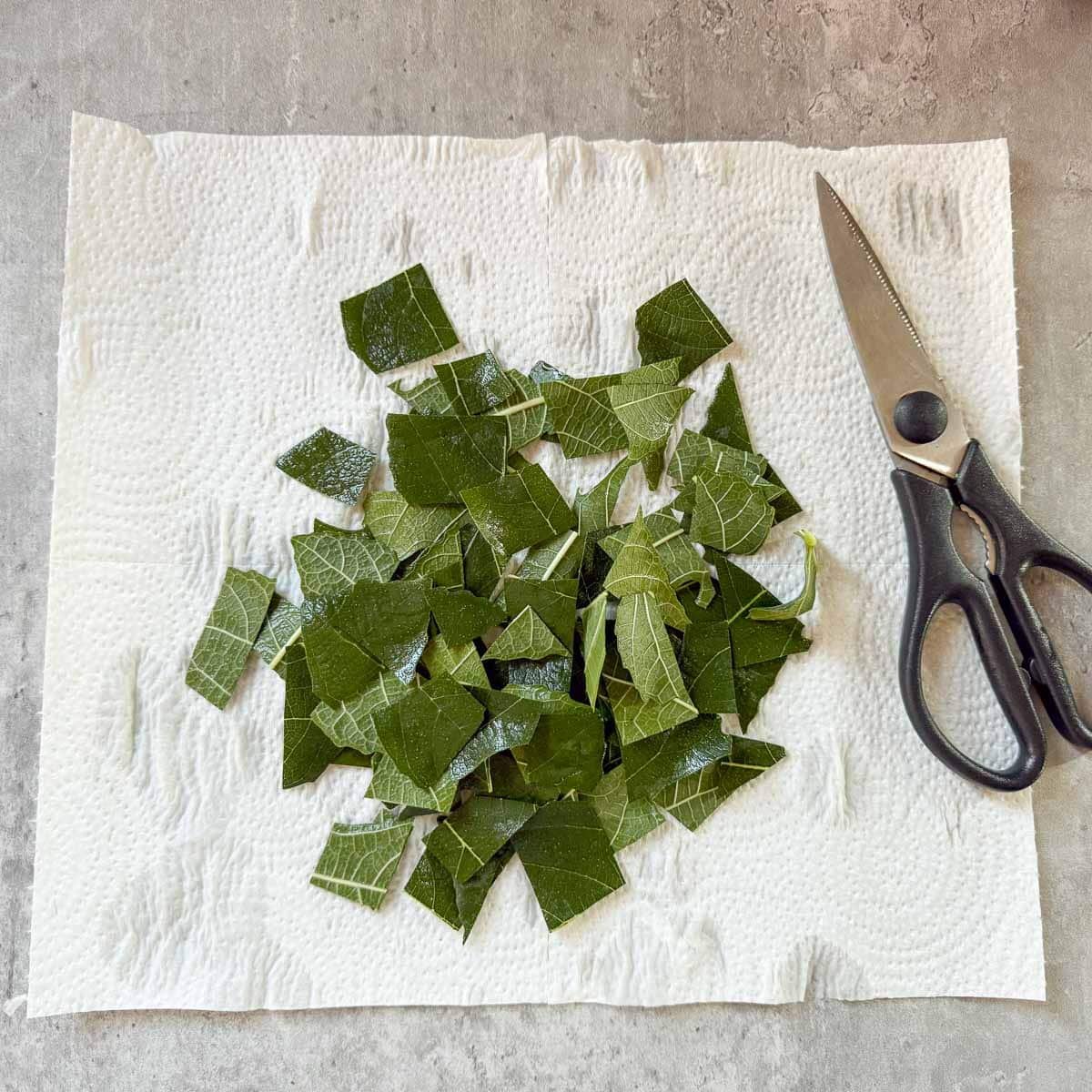
Step 2: Gently boil cinnamon stick and cloves for 5 minutes. Add fig leaves and dried orange slices, then reduce to a gentle simmer and steep for 8 minutes.
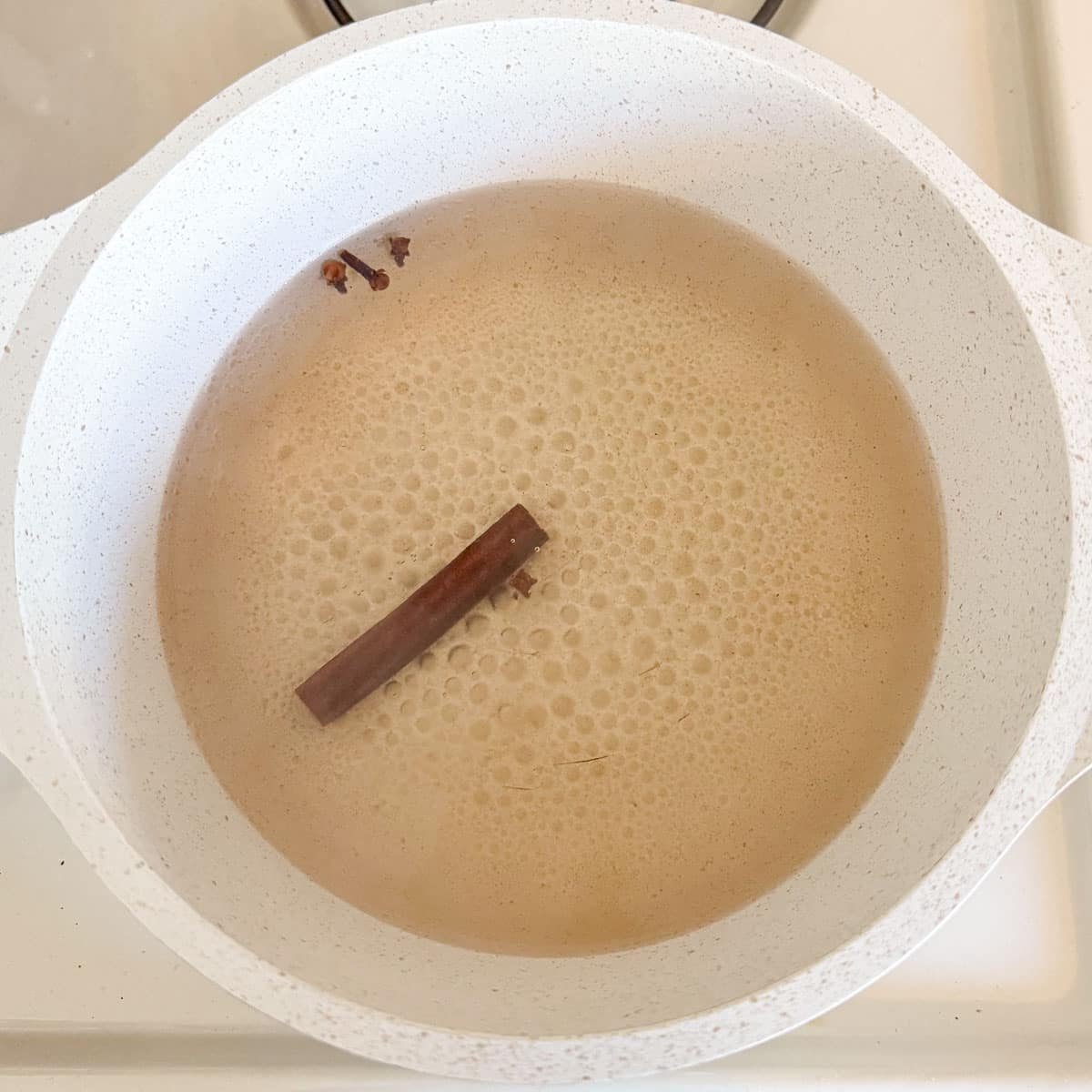
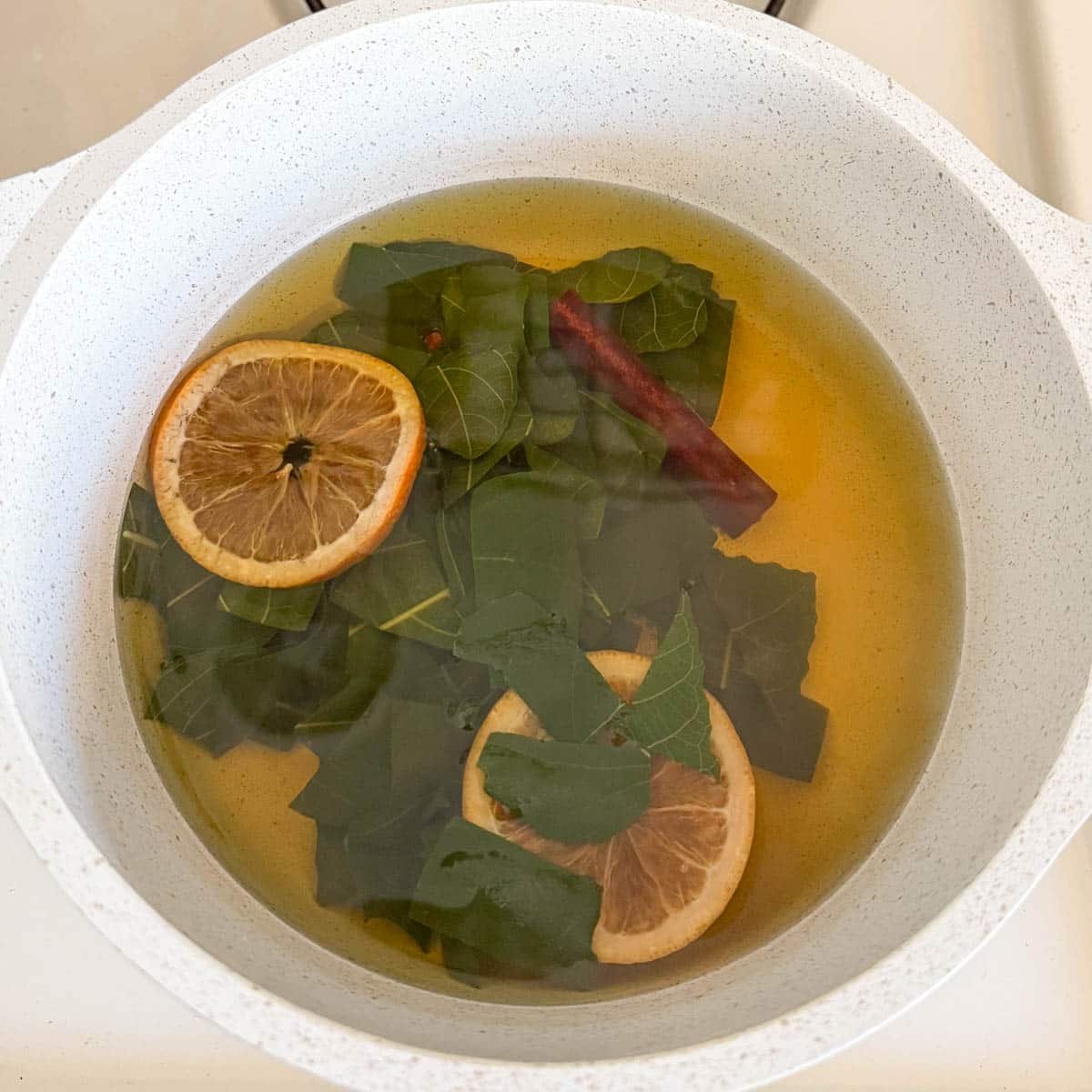
Pro Tip: Oversteeping will result in a bitter taste. If you want a stronger flavor, I recommend adding more leaves, rather than more time steeping.
Step 3: Strain and serve hot or over ice, as-is or with cream and sugar.
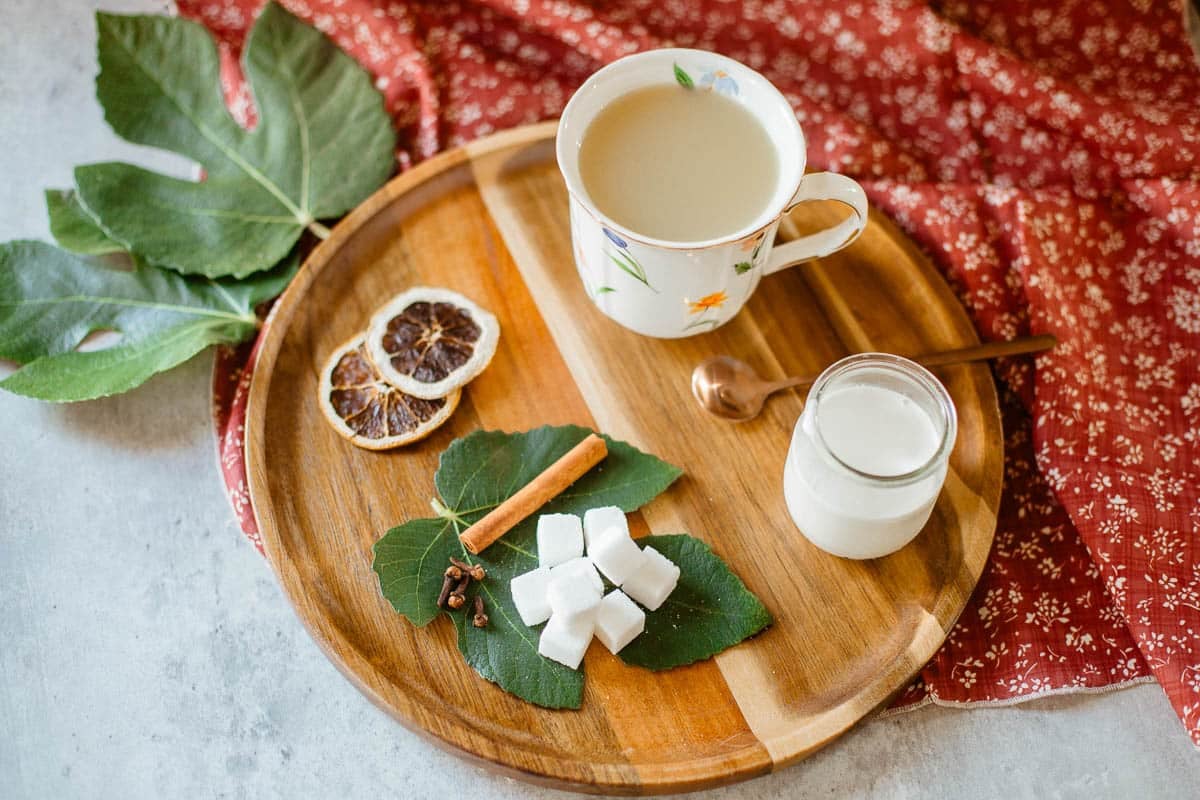
🎛️ How To Dry Fig Leaves
You can hang fig leaves to dry on an herb rack for a few days if you're not in a hurry. For same-day drying, use either of the following methods:
Dehydrator Instructions:
Step 1: Preheat the dehydrator to 95-115°F. Arrange the leaves in a single layer on the dehydrator trays, leaving them whole or cutting them into smaller pieces for faster drying.
Step 2: Dry for 6-12 hours. Leaves should feel crisp and crumble easily when they're done.
Oven Instructions:
Step 1: Preheat the oven to 170°F, or its lowest temperature. Line baking sheets with parchment paper and arrange leaves in a single layer.
Would you like to save this recipe?
Step 2: Dry leaves for 1-2 hours, flipping halfway through.
How To Ferment Fig Leaves (Optional):
Fermenting the tea leaves can add complexity to their flavor.
Step 1: Wash leaves, then chop and place in a sterilized glass jar. Leave space for air circulation.
Step 2: Allow them to ferment, ideally in a warm, humid location around 77-86°F for 4 hours or until leaves take on a copper-like color.
Step 3: Remove leaves from the jar and dry in the oven or a dehydrator before storing or brewing.
How To Store Dried Fig Leaves:
Allow the leaves to cool completely before storing to prevent condensation, which can lead to the formation of mold. Crumble them or store them whole in an airtight container. Keep in a cool, dark place, and use within 6-12 months for best flavor.
When you're ready to steep, use about 1 teaspoon of dried leaves per cup of water and steep for 5-10 minutes. Or use more for a stronger tea.
🩺 Benefits of Fig Leaf Tea
According to WebMD, fig leaves are rich in nutrients such as copper and vitamin B6. They may aid digestive health, relieving constipation and reducing bloating. They may also improve blood sugar levels, cholesterol levels, eczema, and more. While there is insufficient research on the topic, it has been suggested that figs and their leaves may provide anticancer properties.
🍞 More Fig Recipes
Need some ways to use up those ripe figs on the tree? Try this fig bread or homemade fig newtons. You can also make candied figs or try this fig preserves recipe, so they can be enjoyed long after fig season!
🤷🏻♀️ FAQs
Yes, fig leaves can be eaten or used in drinks like tea, cocktails, and smoothies. You can use fig leaves to make ice cream, cookies, syrup, salad, curry, etc. They are also sometimes used to wrap fish, meats, rice, and vegetables while cooking, much like grape leaves.
This tea is not recommended for pregnant or breastfeeding women or diabetics. Those with low blood pressure, latex or fig allergies, or who take blood thinners and anti-coagulants should also avoid it.
It is generally safe to drink 1-2 cups per day, but this may depend on the individual.
Consuming fig leaves can result in a laxative effect. They can also cause skin irritation when handling, especially to those with a fig allergy.
👩🏻🍳 Pro Tips
- Try picking leaves that are green or just turning yellow, avoiding leaves with large brown spots.
- Fresh leaves produce a light, slightly tropical flavor, whereas dried leaves produce a more concentrated, nutty flavor.
- Boiling the aromatics first gives the tea a rich base without degrading the delicate flavors of the fig leaves and orange slices.
- Color may range from light green to amber.
- Enjoy this tea hot, cold, unsweetened, or with milk and sugar.
- You can store leftover tea in an airtight container in the fridge for up to 5 days.
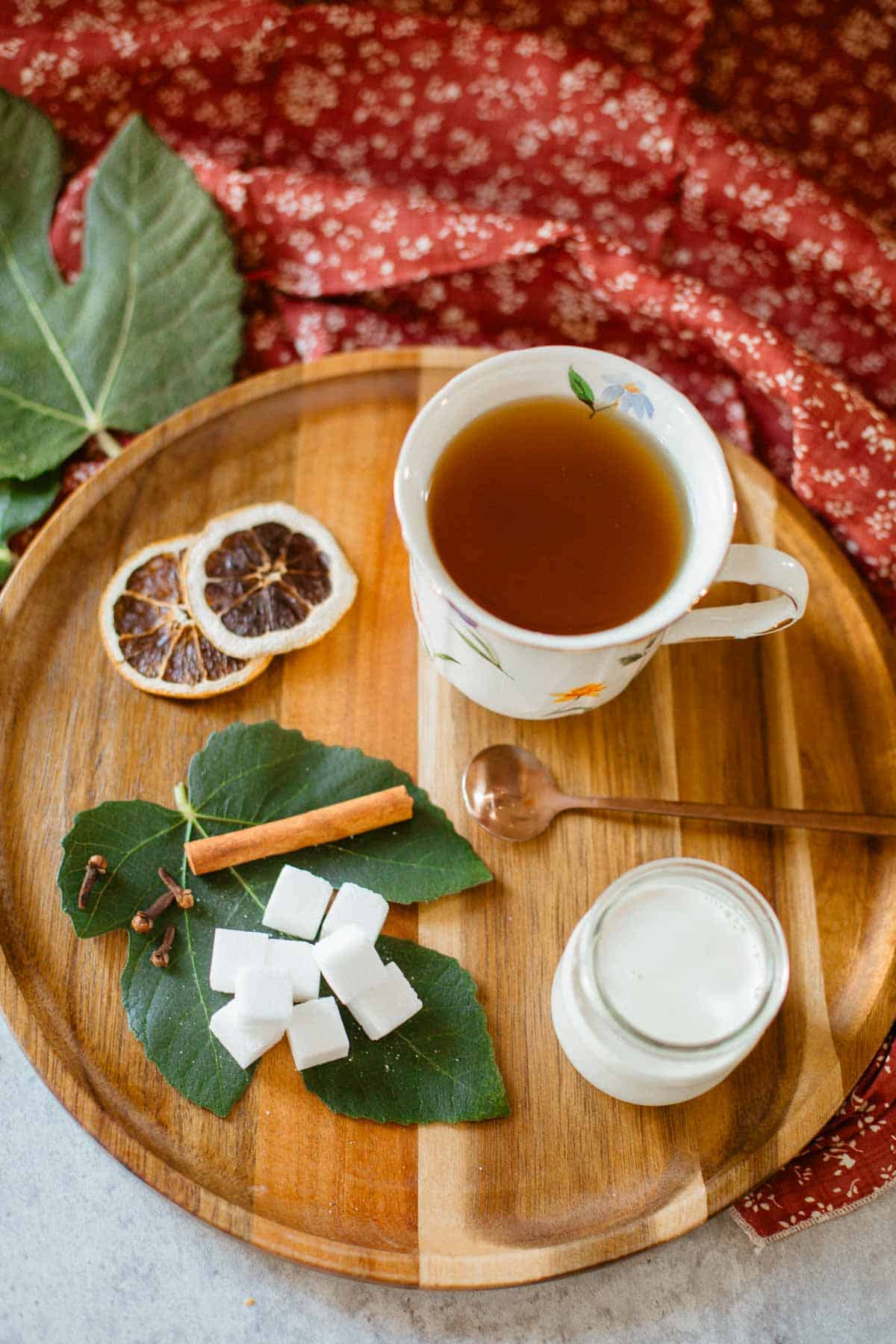
☕️ More Tea Recipes
Did you make this recipe?
📖 Recipe

Fig Leaf Tea
Ingredients
Equipment
Method
- Rinse then soak fig leaves in cold water for 10 minutes to remove debris, then cut them into squares.
- Gently boil cinnamon stick and cloves for 5 minutes. Add fig leaves and dried orange slices, then reduce to a gentle simmer and steep for 8 minutes.
- Strain and serve hot or over ice, as-is or with cream and sugar.
Nutrition
Notes
- Oversteeping will result in a bitter taste. If you want a stronger flavor, I recommend adding more leaves, rather than more time steeping.
- Try picking leaves that are green or just turning yellow, avoiding leaves with large brown spots.
- Fresh leaves produce a light, slightly tropical flavor, whereas dried leaves produce a more concentrated, nutty flavor.
- Boiling the aromatics first gives the tea a rich base without degrading the delicate flavors of the fig leaves and orange slices.
- Color may range from light green to amber.
- Enjoy fig leaf tea hot, cold, unsweetened, or with milk and sugar!
- You can store leftover tea in an airtight container in the fridge for up to 5 days.



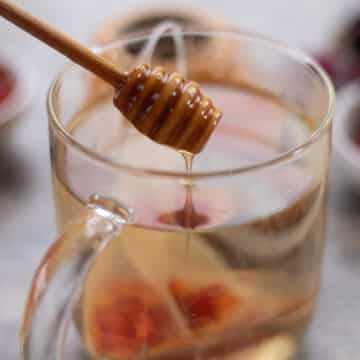

Syed Parvez says
Thank you for sharing this great recipe, we loved it!
Hilda Sterner says
Thank you so much for coming back and leaving a review!
Nena Sterner says
We hope you enjoy this recipe!